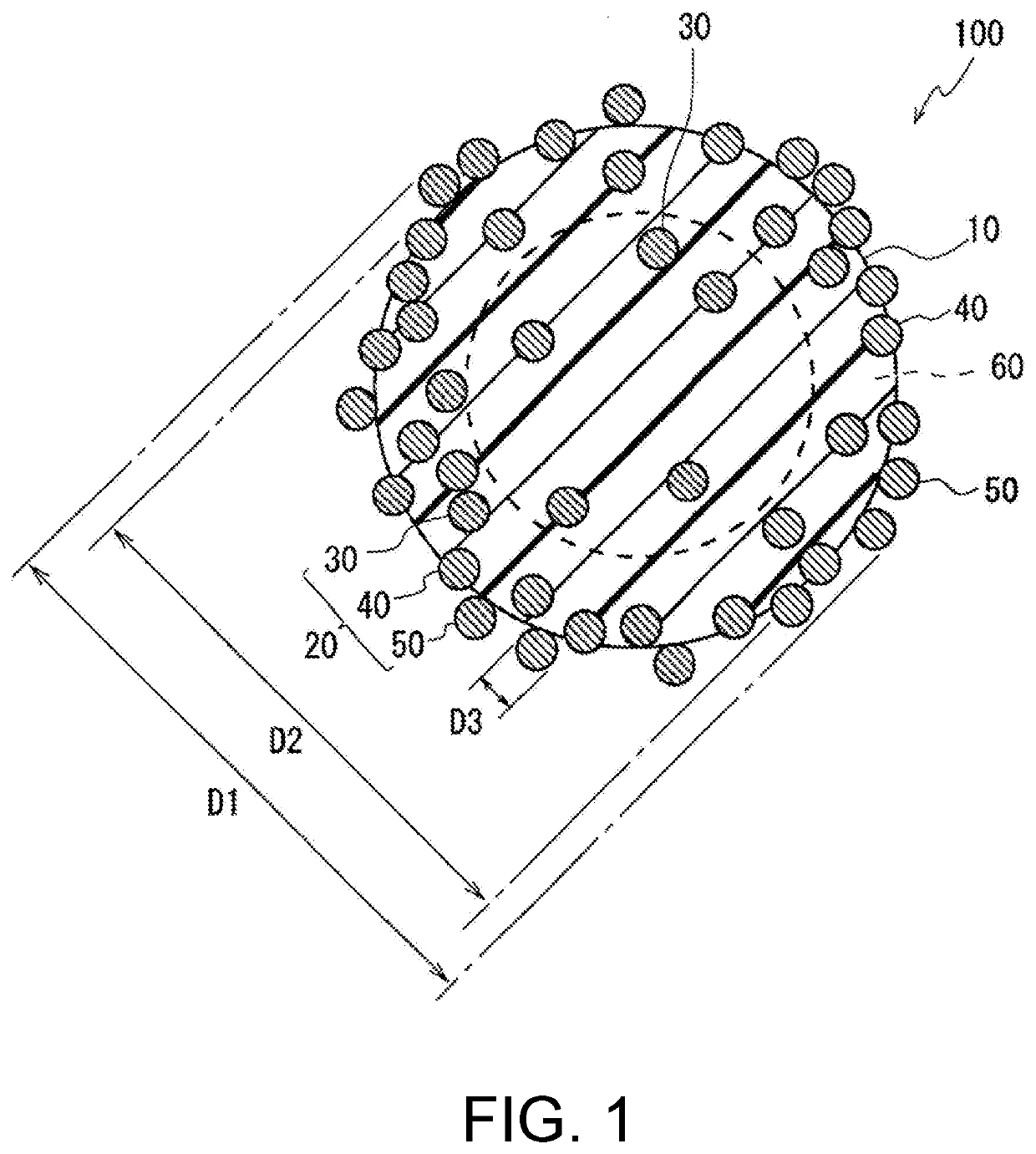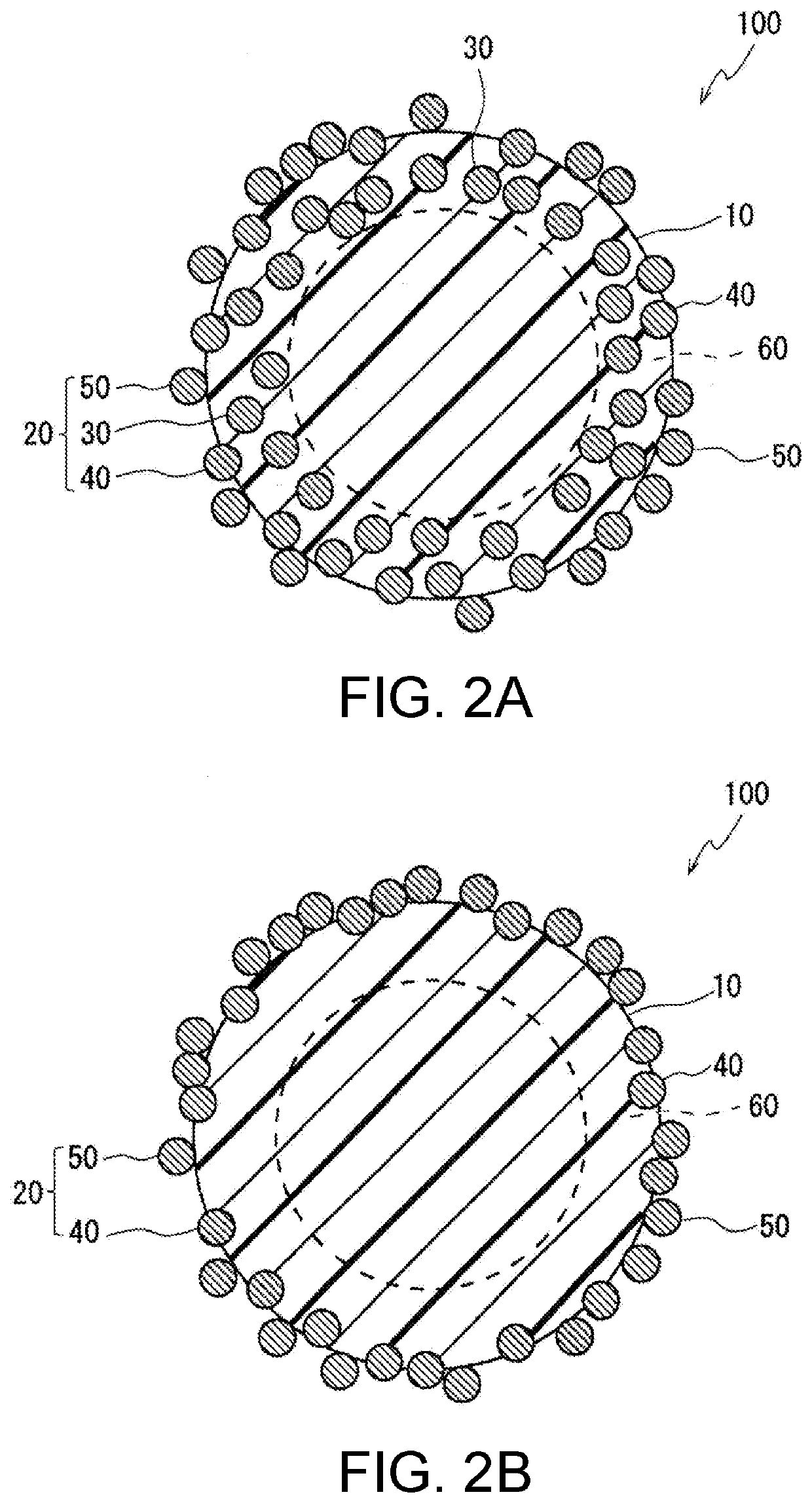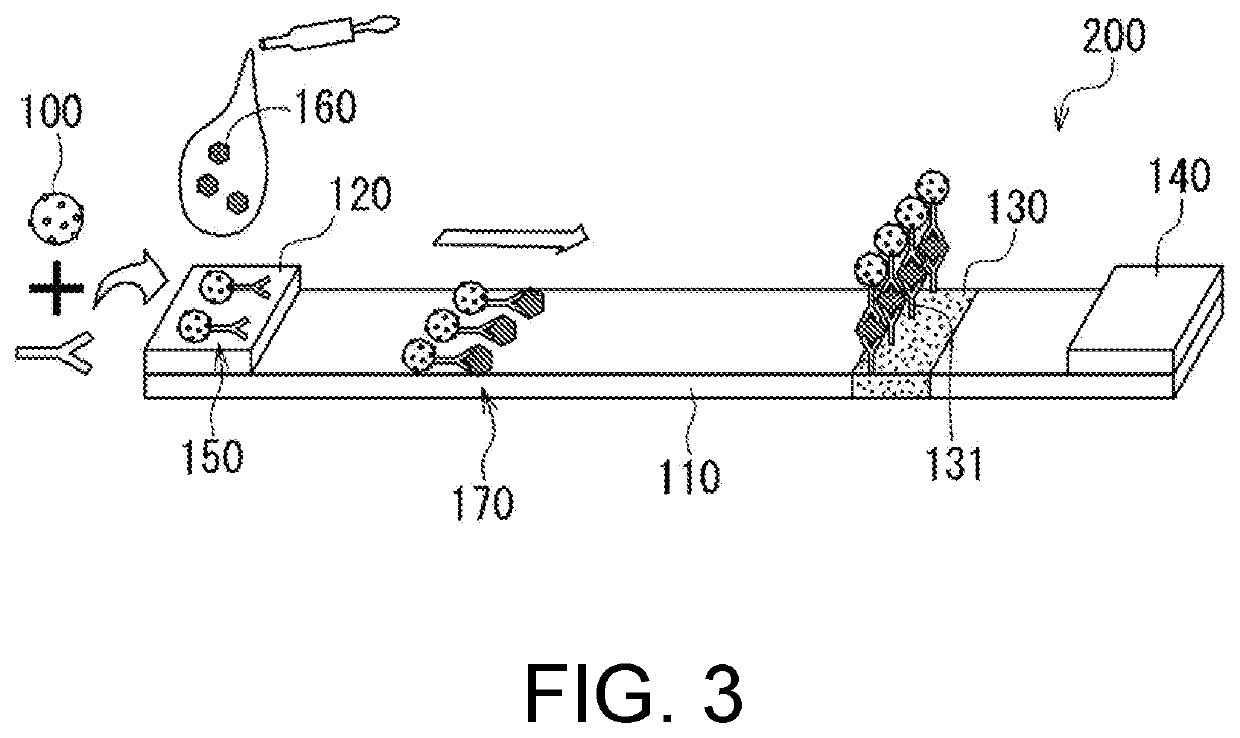Metal-resin complex and use thereof
- Summary
- Abstract
- Description
- Claims
- Application Information
AI Technical Summary
Benefits of technology
Problems solved by technology
Method used
Image
Examples
production example 1
[0165]Trioctyl ammonium chloride (0.91 g) and polyethylene glycol methyl ether methacrylate (10.00 g) were dissolved in 300 g of pure water, and 2-vinylpyridine (48.00 g) and divinylbenzene (2.00 g) were then added thereto, and stirred at 30° C. for 50 minutes and then at 60° C. for 30 minutes under a nitrogen atmosphere. After the stirring, 2,2-azobis(2-methylpropionamidine)dihydrochloride (0.250 g) dissolved in 18.00 g of pure water was added dropwise thereto and stirred at 60° C. for 3.5 hours, and thereby resin particles A-1 with an average particle size of 371 nm were obtained. Precipitation was performed by centrifugation (9,000 rpm, 40 minutes), a supernatant was removed, dispersion was then performed again in pure water and impurities were then removed by a dialysis treatment. Then, the concentration was adjusted and a 10 wt % resin particle dispersion B-1 was obtained.
production example 2
[0166]Resin particles A-2 with an average particle size of 439 nm and a 10 wt % resin particle dispersion B-2 were obtained in the same manner as in Production Example 1 except that 0.39 g of trioctyl ammonium chloride was used and 0.50 g of 2,2-azobis(2-methylpropionamidine)dihydrochloride was used.
production example 3
[0167]Resin particles A-3 with an average particle size of 430 nm and a 10 wt % resin particle dispersion B-3 were obtained in the same manner as in Production Example 1 except that 1.50 g of trioctyl ammonium chloride was used, 49.50 g of 2-vinylpyridine was used, 0.50 g of divinylbenzene was used, and 0.50 g of 2,2-azobis(2-methylpropionamidine)dihydrochloride was used.
PUM
| Property | Measurement | Unit |
|---|---|---|
| Acidity | aaaaa | aaaaa |
| Acidity | aaaaa | aaaaa |
| Acidity | aaaaa | aaaaa |
Abstract
Description
Claims
Application Information
 Login to View More
Login to View More - R&D
- Intellectual Property
- Life Sciences
- Materials
- Tech Scout
- Unparalleled Data Quality
- Higher Quality Content
- 60% Fewer Hallucinations
Browse by: Latest US Patents, China's latest patents, Technical Efficacy Thesaurus, Application Domain, Technology Topic, Popular Technical Reports.
© 2025 PatSnap. All rights reserved.Legal|Privacy policy|Modern Slavery Act Transparency Statement|Sitemap|About US| Contact US: help@patsnap.com



